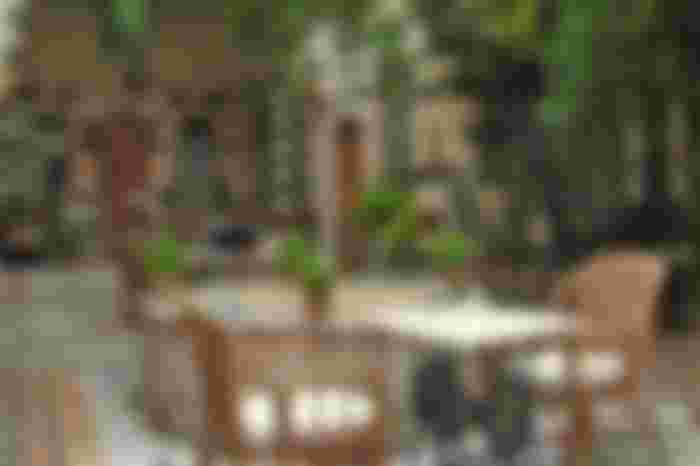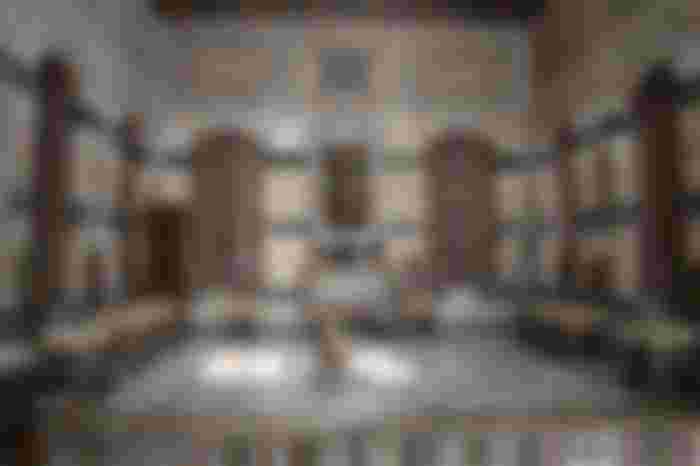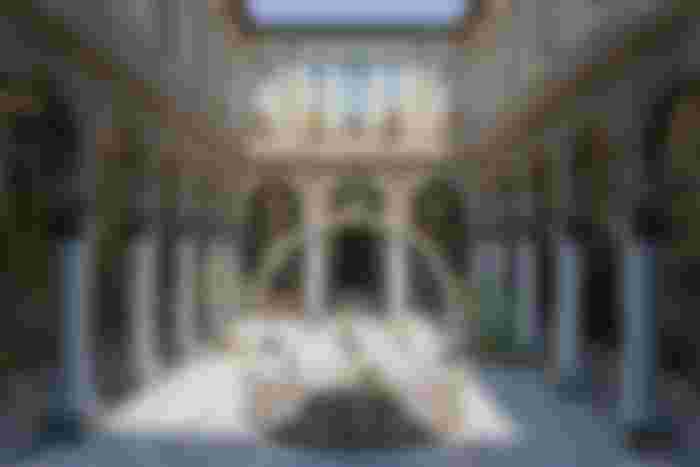- From the spaciousness of the Damascene house to the narrowness of the concrete blocks.
· Since the emergence of the city, there has been a clear link between the political and architectural sides, or perhaps in a more precise sense the domination of the politician over the architect, since the city has always been an image and an expression of the regimes, as the pyramids and huge temples, are placed on its doors statues of pharaohs as an expression of the divinity of the Pharaoh and his association with the great powers of the gods, as well as the European churches in the Middle Ages, with the sumptuous architectural style and the abkhaz construction, associated with the monarchy, and the mystery that surrounds royal life behind huge palaces and high walls, an expression of the royal divinity, the universe of the king chosen by God Itself is an absolute and undisputed authority.
· In Syria, traditional architecture or old neighborhoods in the main cities, was the expressive space of syrian societies at the time, produced by the society itself, according to its social, psychological, religious, moral and life needs as well, but this system somehow collapsed in the face of the modernist tide of architecture and the change of systems of government and the form of the state and its definition and concept, and the new neighborhoods that were called the development of life, population growth and internal migrations to major cities, and no doubt the systems contributed to perpetuating this state of randomness in a way that enables them to control Cities that mean for them to remain in power and ensure that societal submission continues as absolute power.
· Damascene architecture as a community product
We will start from the smallest unit in the popular neighborhood to the whole neighborhood, the Damascene house has been characterized by the presence of a square or an inner foyer "Dish of the House" open to the sky in connection with the space, while maintaining the privacy of the place, and in the center of it freely its mission is to moisturize the inner atmosphere and add the aesthetic to the dish, surrounded by Trees and plants, around which the rooms overlooking the facades and windows overlook it, and on the ground floor usually there is the kitchen and "diwaniyah" or "Zalmlak", a large room for receiving guests, including mosaic-decorated brushes and walls decorated with decorations and Qur'anic verses, They are used for long sessions and problem solving among the people of the neighborhood.
On the south side of the house is the "iwan" or "liwan", a board that is high above the level of the dish and is fully open to it, and is used for family sessions or quick receptions, usually from the height of the highest ceiling in the house, either one or two floors maximum.

· Through a staircase based on a wall that leads to the open top floor on the street, it is provided with privacy networks of wood prominent from the wall a few distance away called "mashrabia", and in order to move between two worlds: one personal and the last public
· you have to pass through a narrow corridor called "vestibule" in which it is like a transit between two lives, leading to the door of the house usually consisting of two parts:
1- the first large used to introduce furniture and large objects, within it and by the end of a bracket there is a "peach".
2- or a small door that enters or exits the people The house and from it to the neighborhood consisting of narrow paved streets, defined by the solid exterior walls of the houses, are an intimate condition within the neighborhood or neighborhood.
It also spreads significantly in any old lane a roofed corridor in the middle of an alley or street, which is said to be a purely functional reason, if a family wants to marry a son the father went to his opposite neighbor, and tells him "lend your shoulder" and build a room for new couples with two walls between opposite neighbors, which forms underneath this corridor.

· This architectural style in Damascus dates back to the beginning of the eleventh century AD, during the reign of Maaouiya ibn Abi Sofian, who built his palace on this style, and bore the name of the Principality House or The Green Palace, relative to the green dome above it, and the Damascene house achieved not only the element of privacy for its inhabitants, but also took into account the environmental aspects, with thick walls and close to the interior with the interior lobby that includes the sea in the center, providing a humid environment in a site characterized by drought summer, and thermal isolation in winter.
· Thus, the architectural style used in the old neighbourhoods and the architectural design of houses and the urban planning of neighbourhoods took into account the environmental, social, functional and economic aspects, as well as the natural product of a cohesive society, and an expression of its participatory state, which existed in accordance with the social contract approved by the community itself, as an extension of the city's history and development in proportion to the community situation and its changes.
With the modern urban tide that has reached the Arab region since the mid-19th century, Syria's architectural and urban identity has begun to be lost and fragmented, in the face of these new concepts and the striking attraction to new styles and their association with urbanization.




The talent from the ancient people or from the past are really appreciable than architects of today. Imagine, with a very limited materials they were able to build infrastructure, a beautiful and strong one. Which is better compared to the infrastructure of today.